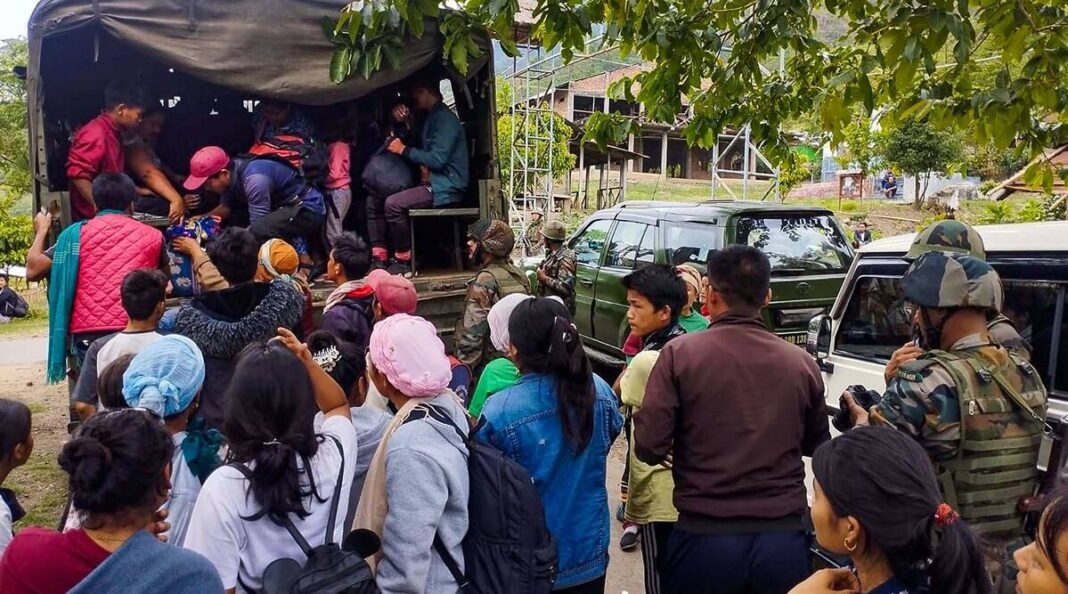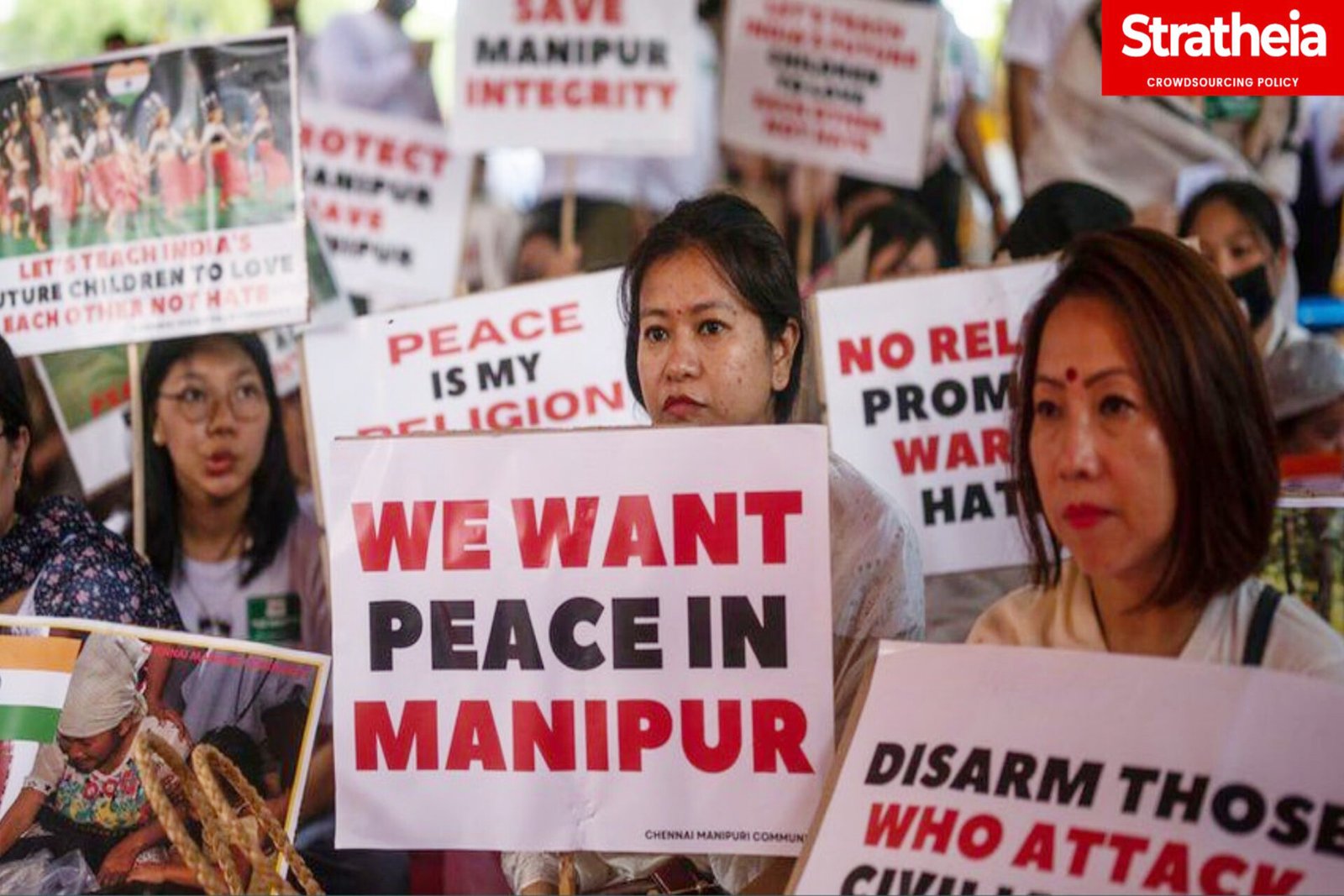By: Dipak Kurmi
The crisis in Manipur that arose from the outbreak of communal violence between two ethnic groups – Kukis and Meiteis – in various townships is currently under control. However, the situation still remains fragile and tense due to the displacement of many individuals from their homes. These individuals are currently seeking refuge in relief camps located on the campuses of police and paramilitary establishments.
Manipur comprises three significant ethnic groups, namely Nagas, Kukis, and Meiteis, with the Meiteis being the most populous. While the former two are classified as Scheduled Tribes (ST), a significant number of Meiteis are currently demanding to be included in the ST category, which has led to the present conflict. This growing demand for inclusion in the ST list by the Meiteis is the root cause of the ongoing tensions.
The demand for ST status by the Meiteis is not a recent development but has been ongoing for over a decade. The proponents of this demand assert that it is not only about reservation benefits but also about safeguarding their land. Manipur, located in the Northeast region of India, can be roughly divided into two areas. The central part of the state comprises a fertile riverine valley that constitutes less than 10 percent of the state’s land area. On the other hand, the surrounding hills make up the remaining 90 percent of the state’s land.
The current demographic imbalance in Manipur can be traced back to the British era when they took control of the region in 1891. As per their administrative policy, the British separated the “non-revenue hills” from the “revenue plains,” following the revenue administration mechanism that they had introduced in Assam through the Bengal Eastern Frontier Regulation, 1873. Consequently, the Meiteis, who form a majority of about 52 percent of the state’s population, were confined to the small valley, while the surrounding hills were left outside of their jurisdiction. This legacy of British administrative policy has resulted in the current demographic disparity in Manipur.
The Meiteis, who are confined to the central valley of Manipur due to British administrative policy, are subjected to modern land revenue administration, which makes their homeland open to settlement by any Indian. In contrast, the sparsely populated hills are out of bounds for them and are reserved for the Nagas and Kukis. As a result, over 60 percent of the state’s population currently resides in the valley, while the hills, reserved for the other ethnic groups, remain largely unpopulated.
As the population of the Meiteis in Manipur’s central valley has increased over time, they have developed a unique sense of being under siege. This is largely due to their complex relationship with the hill tribes, which is characterized by both fraternal feelings and deep-seated mistrust. The usual developmental disparities between the hills and the plains have further accentuated this mistrust, with residents of the hills perceiving these disparities as a result of discriminatory policies. As a result, the Meiteis feel increasingly crowded in their living space, which has contributed to their sense of siege.
The demand for ST status by the Meiteis in Manipur has created a sense of apprehension among those who are already part of the ST list. They fear that the inclusion of the Meiteis would reduce their own share of the reservation benefits. Additionally, they worry about Meitei incursions into the hills if they were to also become STs. However, this fear is unfounded, as traditional territorial boundaries are respected within existing ST communities, and any incursion into each other’s territory can result in violent conflicts, as demonstrated by the Naga-Kuki conflict in Manipur in the 1990s. Despite this, the Meiteis feel marginalized in terms of land and job opportunities and believe that ST status would offer them much-needed protection.
For more than a decade, a memorandum urging the Manipur state government to recommend ST status for the Meiteis was not acted upon, likely due to opposition from some members within the Meitei community, as well as from the Nagas and Kukis. However, those seeking ST status eventually took their case to the Manipur High Court. On April 19, the court ordered the state government to take action and forward its recommendation for ST status to the Union Government.
The tribal groups did not respond positively to the court’s directive, and a wave of protests and condemnations ensued, which even drew the ire of the High Court. The rally on May 3 was the culmination of these protests, reaching a climactic crescendo.
During the rally in Churachandpur, a rumour circulated that the Kuki war heroes’ memorial complex in a suburb bordering the valley district of Bisnupur had been set ablaze by Meiteis. This caused a violent outburst, as a mob went on a rampage, burning down several Meitei settlements around Torbung village. Eventually, the memorial site was found to be intact, but there were reports of a small tyre burning outside the gate, which some interpreted as a sign of violent intent.
The Kukis’ response to the rally was more intense than the Nagas, and there are underlying reasons for it. Recently, some groups have been spreading a narrative that the Kukis are illegal migrants. While this may be partly true, it has been used by their rivals to label them as “refugees” and subject them to humiliation. It is not hard to imagine how this would have led to a simmering resentment within the community, which may have contributed to the violence that ensued.
The Kukis have a unique landholding tradition where villages are owned by chiefs, and since only one of the chief’s male children would inherit the chieftaincy of the village, other siblings and capable villagers often establish their own villages. This, coupled with unstable subsistence farming which cannot support large populations, has resulted in a tendency of Kuki villages to periodically splinter and proliferate. However, this has also brought them into conflict with their neighbours in the hills, the Nagas.
In recent times, the tendency of Kukis to splinter and proliferate into new villages has been used to humiliate them even by government institutions. The situation had escalated to such an extent that even government measures like eviction drives from reserved forests and the crackdown on poppy plantations were seen as specifically targeting the Kukis. Matters took a turn for the worse on March 10, when the state Cabinet decided, in an arbitrary move, to withdraw from a tripartite Suspension of Operations (SOO) agreement with two Kuki militant groups, the Kuki National Army and the Zomi Revolutionary Army. This decision implied that the groups were involved in encroachments in forests for poppy plantations and that they were of foreign origin. While the SOO pact included the Union Government, it is unlikely that this impulsive decision would be approved. However, the deep hurt caused to the Kukis is apparent. (The writer is a journalist & commentator based in Guwahati, he can be reached at dipaknewslive@gmail.com)







